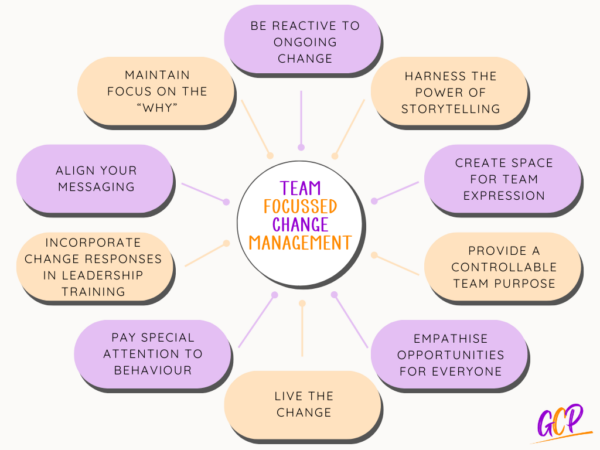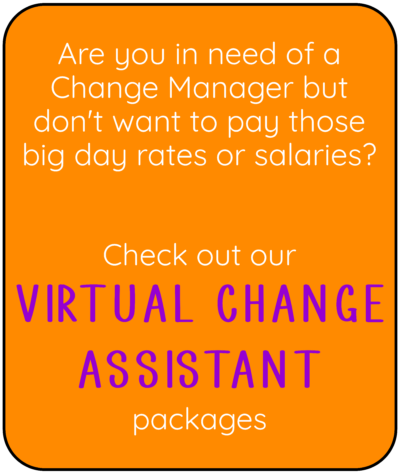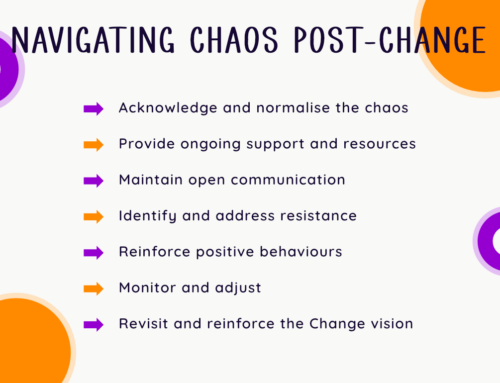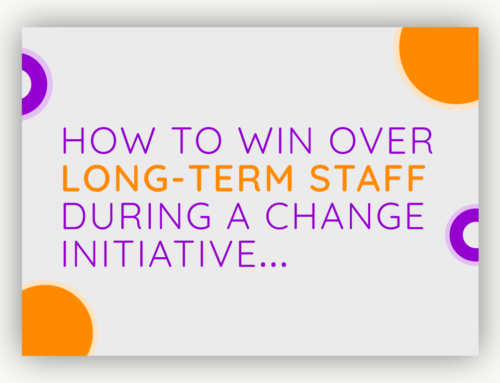
For leaders it’s important to make sure that our hybrid and remote teams feel listened to, when organisations take an approach that is process-driven, systematic ultimately communication can get ‘lost in translation’ or become more like a game of telephone ping pong.
When working with organisations undergoing change, we have encountered countless scenarios where the leadership team are solely focussed on discussing workstreams, processes, structures, and systems rather than their people. This leaves Teams feeling abandoned and asking ‘why is this happening?’.
MAINTAIN FOCUS ON THE “WHY”:
Retain a clear understanding of the importance of the “why.” Acknowledge the inherent emotional nature of individuals when faced with change. Unlike computers, humans seek to comprehend the reasons behind change, especially when it signifies significant shifts in daily routines. Take the time to clarify the “why” to ensure alignment within the team.
ALIGN YOUR MESSAGING:
Ensure consistency in messaging across all leaders and people managers to foster successful and accepted change within the organisation. It’s essential that every member of the leadership team conveys the message uniformly to instil positivity and alignment behind the change.
INCORPORATE CHANGE RESPONSES IN LEADERSHIP TRAINING:
Integrate training for leaders on managing diverse reactions to change, transforming the challenge into an opportunity to enhance leadership skills. By approaching discussions about change with intentional positivity and a unified vision, managers can contribute to the development of a more adept and resilient team.
PAY SPECIAL ATTENTION TO BEHAVIOUR:
Identify potential reasons for team members’ resistance or fear of change. To effectively communicate a positive vision of the future, be attuned to possible roadblocks. Discussing language usage and addressing doubts within the team are crucial for ensuring a smooth transition. Regular, transparent communication is key to reassuring the team.
HARNESS THE POWER OF STORYTELLING:
Utilise storytelling to convey the “why” and evoke positive emotions within the team. While facts and figures appeal to logic, storytelling taps into the emotional side, providing a vision beyond mere numbers. Share examples of how the change can enhance the current situation, offering opportunities for the team and individual growth. Good Change People offer a wide range of creative PowerPoints to help you key points, project plans, status updates, and more!
CREATE SPACE FOR TEAM EXPRESSION:
Encourage an open environment for team members to share their questions, thoughts, and feelings about the change. Proactively schedule discussions about change to prevent doubts from arising. This proactive approach ensures that the team feels included and motivated to embrace change as an opportunity.
PROVIDE A CONTROLLABLE TEAM PURPOSE:
Amidst significant change, offer a concrete rallying point for the team, such as a shared project or objective. This provides a tangible focus, helping alleviate the natural unease during times of uncertainty. While acknowledging elements beyond control, having meaningful goals puts uncontrollable factors into perspective.
EMPHASISE OPPORTUNITIES FOR EVERYONE:
Highlight the potential opportunities that change can bring, even if it involves difficult decisions like team restructuring. Ensure a sense of safety and support within the organisation, presenting change as an opportunity for development. Offering training programs and qualifications can offset uncertainty and foster a valued and motivated team.
BE REACTIVE TO ONGOING CHANGE:
Avoid getting caught up in processes and implementation, especially during substantial change. Successful organisational change requires constant monitoring at both organisational and team levels. Regularly assess resonance, areas needing attention, and aspects that require a revaluation, ensuring an agile and efficient approach. Pulse checks are a great way to ensure you’re listening to the beating heart of your people during change initiatives.
LIVE THE CHANGE:
Act as a positive role model for the team during times of change. Demonstrate alignment with the new vision through both language and actions. Consistency between words and deeds is essential for the success of the change. Emphasise the importance of believing, behaving, and utilising tools effectively in the change management strategy.
Did this help? There’s a community full of great people on our platform – join us today to find out more!








Leave A Comment